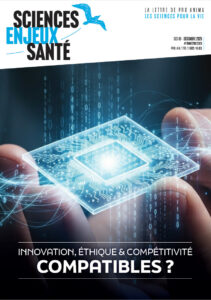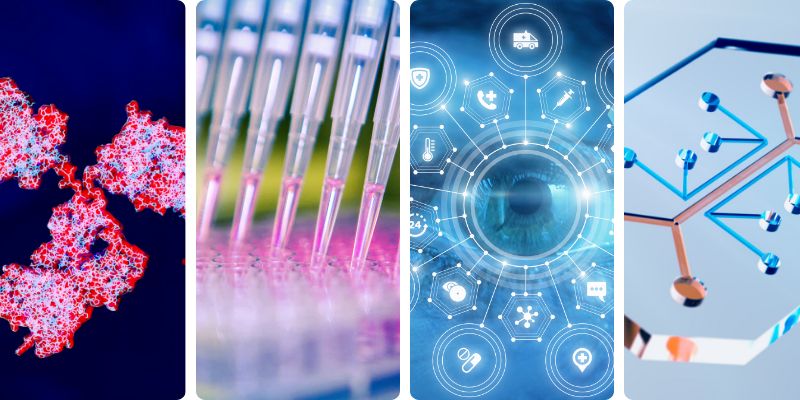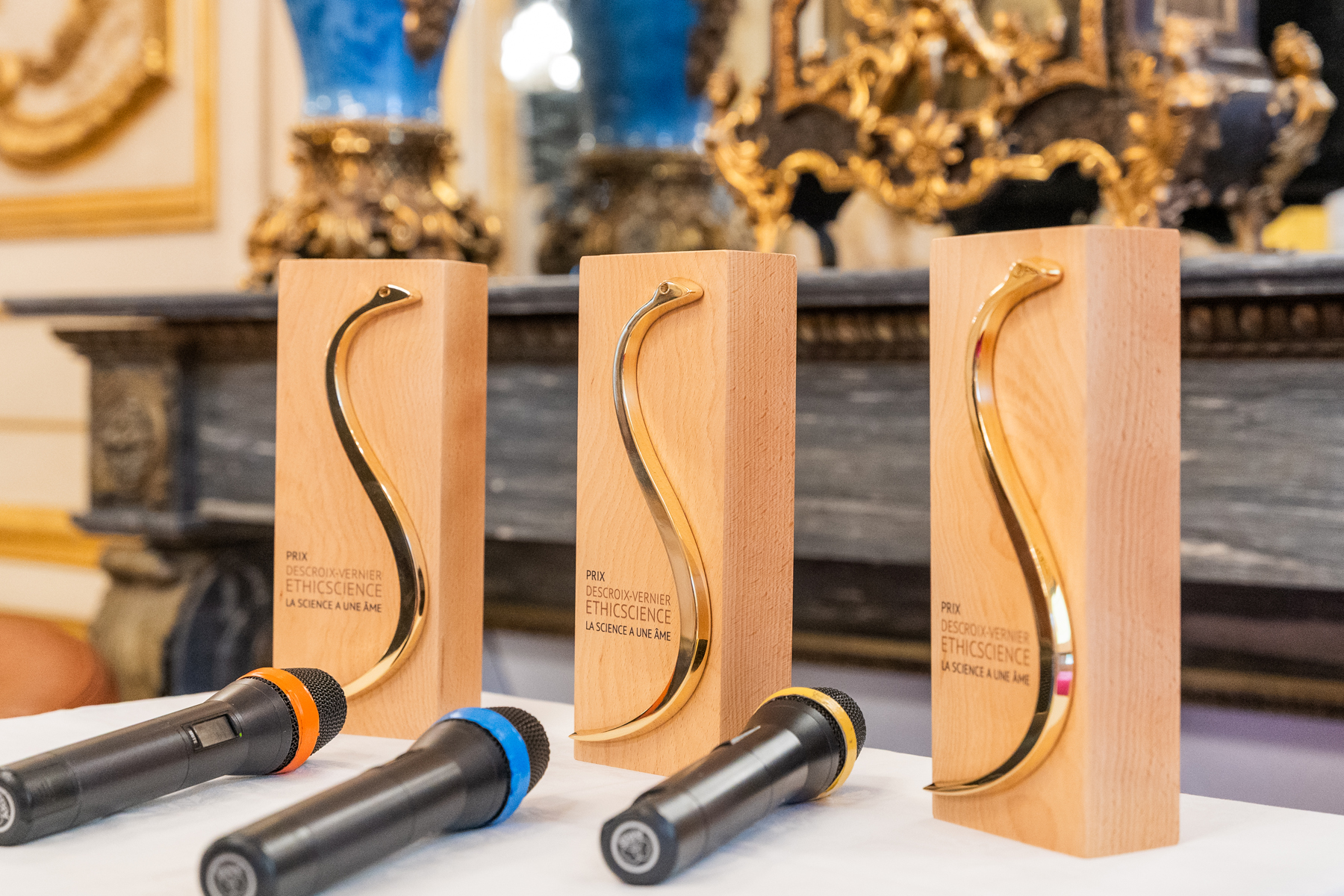
2025 DVES PRIZE : Laureate of the Jury’s Prize
ObFAT 3D, EXADEX-INNOV
SES116 — Mars 2025Dr. Vincent Dani is co-founder of the French startup ExAdEx-Innov, which develops innovative and patented technologies based on human adipose tissue. In addition to his expertise as a deeptech entrepreneur, Vincent holds a PhD in Cellular and Molecular Biology from the Université Côte d’Azur and training in clinical research management from the Faculty of Medicine of La Timone, Marseille.
Dr. Luigi Formicola is the co-founder and COO of ExAdEx-Innov. Holding a PhD in cell biology, he has over ten years of experience in research project management and technology transfer in the biotechnology sector, as well as in drug development.
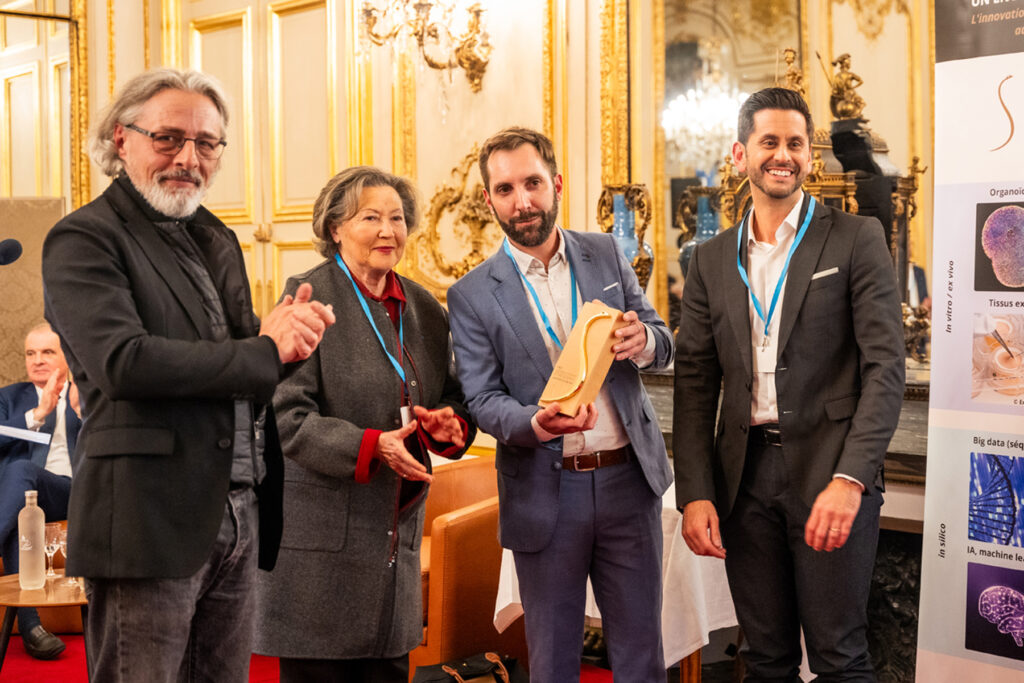
Pro Anima Committee: Could you briefly introduce your “ObFAT-3D” project to our readers, its specific features, the objectives and results (in terms of innovation and/or application) you expect, and by when?
Dr. Vincent Dani & Dr. Luigi Formicola: Today, obesity and associated chronic diseases, such as type 2 diabetes, represent a real public health challenge. One of the main causes is low-grade inflammation and fibrosis of visceral adipose tissue (the fat located deep inside the body, around internal organs), which worsen these diseases. Currently, there is no effective and truly relevant reference laboratory study model for studying these mechanisms and testing new targeted treatments.
Our “ObFAT-3D” project aims to create the first laboratory model of human visceral adipose tissue capable of faithfully reproducing the processes occurring in patients with obesity and chronic metabolic diseases. Thanks to the patented ExAdEx technology, we have the ability to cultivate ex vivo in the laboratory human adipose tissue derived from donors for several weeks, without altering its structure and physiology. In partnership with the Nice University Hospital, we have succeeded in reproducing, in a controlled manner, the inflammation and fibrosis observed in patients with obesity.
This model represents a major breakthrough because it offers a more relevant alternative to animal models, which only imperfectly reproduce the mechanisms of obesity in patients. By the end of 2025, we will offer this model to researchers and pharmaceutical manufacturers to accelerate the development of new treatments.
P.A.: The unique feature of the Descroix-Vernier EthicScience Prize is that it promotes and rewards innovative research programs outside of animal models. What were your motivations, the reasons that led you to work and/or develop these innovative human-centered tools?
VD and LG: Our models are designed and derived from human tissue recovered during surgical procedures, providing direct access to representative samples from different donor profiles. This way, we leverage surgical waste, which carries real predictive value for preclinical research.
Unlike animal models, where obesity does not develop in the same way, the models we derive from human tissues retain their native structure and functions, ensuring more reliable results that can be transposed to the clinical context.
This approach is both more ethical and scientifically more relevant, because it allows us to study pathological mechanisms in adipose tissue under laboratory conditions and test different possibilities to reverse it in a truly human context, thus accelerating the development of personalized, more suitable, safe and effective treatments.
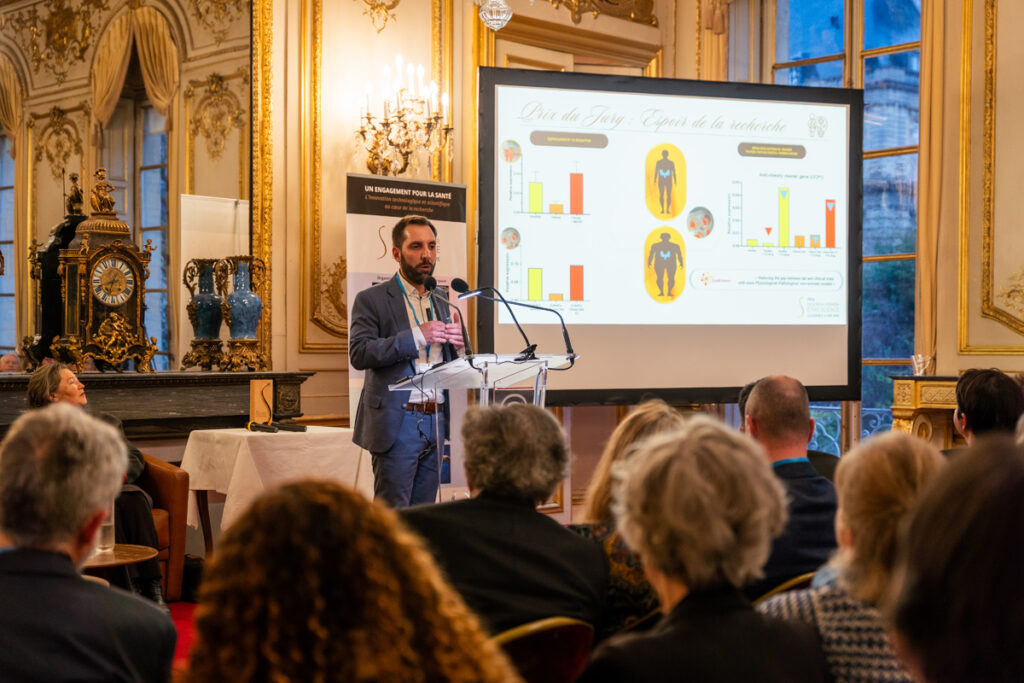

P.A.: What do you think makes these new non-animal models so powerful, and in your experience, what motivates researchers to use these innovative tools?
VD and LG: Alternative models are progressing, but many remain complex to set up, sometimes requiring extensive infrastructure and highly specific technical expertise. Our vision is to offer mature human tissue models that can be used directly in the laboratory and easily manipulated using conventional cell culture techniques. Our tissues retain their native structure, with different cell types, intact vascularization, and an intact extracellular matrix, offering a unique approach that can be immediately used according to researchers’ needs.
In addition to being more clinically relevant than animal models, we also want our models to be more accessible and quicker for researchers to integrate into their research. This represents a more ethical, more accessible, and more effective alternative to existing animal models.
P.A.: Into which research context (French, European, international) does your work fit? What are the challenges of your project?
VD and LG: Our work is based on a close public-private collaboration between our company ExAdEx-Innov, the Institute of Molecular and Cellular Pharmacology (IPMC) in Sophia Antipolis, the Valrose Institute of Biology, and several French clinical and academic partners. Our ambition is to make our human fat models the international benchmark for pharmaceutical and biomedical research.
Some prototypes have already been tested by manufacturers in the dermo-cosmetics and cosmetic surgery sectors, and our goal is to make them more widely available to researchers, innovative startups, and product development companies, in France and internationally. The challenge for us is clear: to have innovative, non-animal models to accelerate the development of more effective, patient-friendly treatments.
“Our models are designed and derived from human tissue recovered during surgical procedures, providing direct access to representative samples from different donor profiles. Unlike animal models, where obesity does not develop in the same way, the models we derive from these tissues retain their native structure and functions, ensuring more reliable results that are transposable to the clinical context.”
P.A: Which point in your career and research does this award mark you out, and what will it enable you to accomplish?
VD and LG: Founded at the end of 2022, ExAdEx-Innov has established itself in just over two years as a key player in innovation in human tissue bioengineering. We already collaborate with companies in the dermocosmetics, medical device, and pharmaceutical sectors, and we are constantly pushing the boundaries of research by developing ever more complete and physiologically relevant tissue models (vascularized, fibrotic, lymphatic, etc.).
This Award represents much more than a reward: it is recognition of the scientific and medical potential of our work. It validates our approach, reinforces our commitment to more ethical research, and accelerates our mission: to provide researchers and manufacturers with revolutionary tools to more rapidly develop effective and patient-friendly therapies.
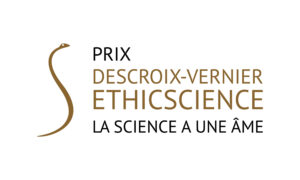
Image credit: Comité scientifique Pro Anima, Axel Coquemon

